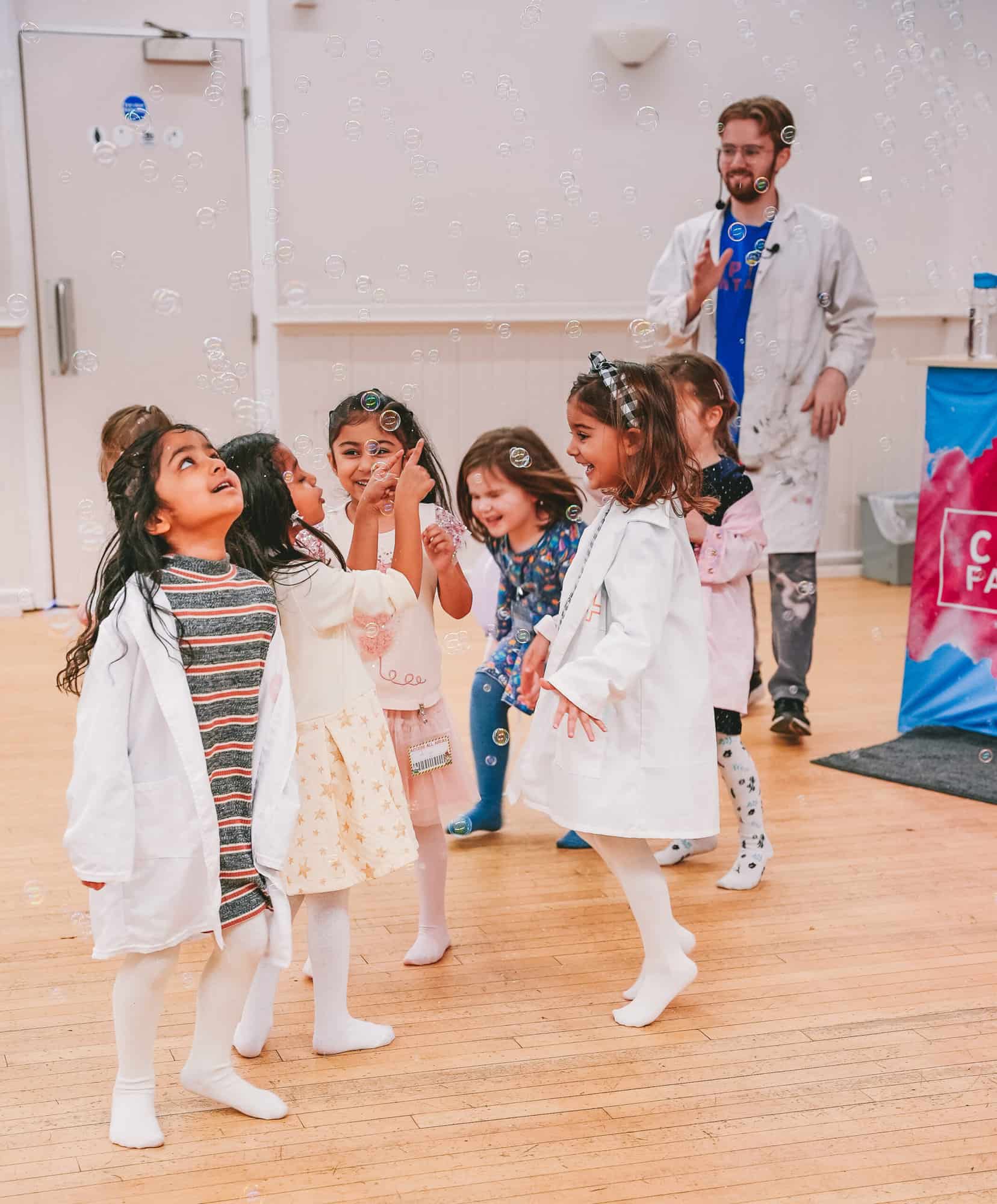Science IS Curiosity : Free Kids Activity!
In celebration of International Day of Women and Girls in Science 2024
You may not know it but today is International Women and Girls in Science Day, and
you may be thinking ‘So what? Why do we need a day dedicated to that?’
Well, the answer is simple. According to the World Economics Forum: ‘In 2015, across 69
national science academies, women made up 10% or less of members in 30
countries.’ Almost 10 years later statistics show that ‘women make up less than 30% of the worlds researchers’, so we still have a long way to go for Women in stem. As you can see, there is a significant gender gap in science- but what can we do about it? Well I’m glad you asked!
When you say science most people will think long complex formulas, and people in lab coats using expensive equipment. Yes, those things are a part of science, but that is not all it is. Science, in it’s purest form, is curiosity. It’s asking:
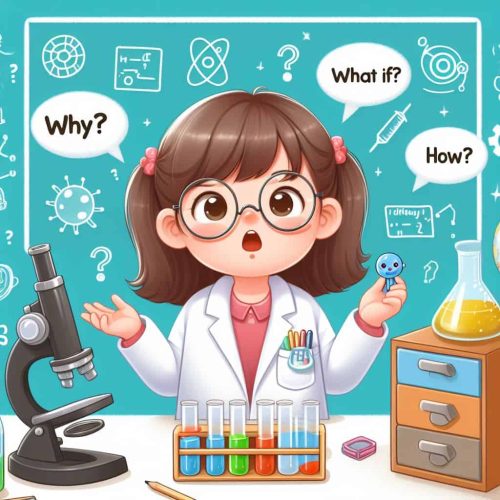
This is something that children do all the time, freely, and without a second thought. Without fear of being judged.
And this is how science started: by people asking these exact questions and then searching for answers. It ranges far and wide from the life cycle of a butterfly to how the sun shines, from the components inside our blood, or how to make fire.
But what do all these things have in common? They start with just a tiny bit of curiosity that has expanded and grown as we have searched to find answers.
When you view science like this it isn’t so scary, and you certainly don’t need to be a professor to help your children discover science!
I have yet to meet a child who hasn’t at some point asked you ‘why?’ So as adults one of the best things we can do is engage with that curiosity, and most importantly, encourage it. You may not have all the answers or perhaps you feel you know very little. But simply saying ‘I am not sure, why do you think it might happen?’ can go a very long way in nourishing a child’s curiosity and encourage them to ask questions.
Some people would say that you should not introduce science to young children, but to that we disagree!
If you view science in the eyes of curiosity- that is something any child can engage in and relate to. All you need to do to support that curiosity is to make sure that you talk at their pace, using simple concepts that they can grasp easily, and with intrigue!
Here at captain Fantastic, we want to provide opportunities for children, especially girls, to engage with science in a fun and exciting way, but also to encourage adults just like yourself and show that you can be a part of that, even if you did not think science your thing back in school. And one of the best ways to do that is to make science fun and related to things kids know and want to learn about!
With this in mind, we have our very special science parties that do just this! They are entertaining and engaging but also teach children without it feeling like a lesson. There are experiments involving fire, involving acid, and involving the air that is all around us. We get every single child involved as much as possible to try and nurture that love for learning and curiosity! And after they’ve joined in and seen all the fun and craziness that can be had with Dr. Zob (our CRAZY scientist!), he will show you AND the children that science is far more than books and studying.
However, that being said, we want to help you here and now, to show you just how affordable and fun science can be! So here is a very simple and fun activity that you can do with your children, and it only uses items that you will already have in your house.
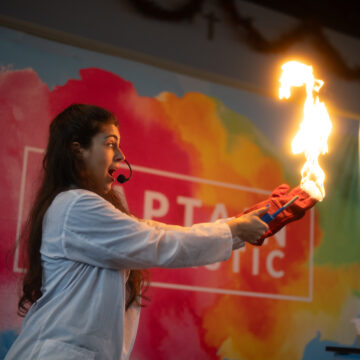
What are colours? KIDS ACTIVITY!
Have you ever given your kids some paint and had fun finding out what happens when you mix different colours together? Sometimes you get pretty colours like orange, or green, however I am sure as a parent you are familiar with turning your back for a split second and when you turn back around, they’ve ended up with a big brown mess!
well, have you ever wished that you could separate the colours back out? Because you’re in luck! In this activity we are going to learn how to do just that! Only not with paint but with the felt-tips I’m sure you have lying around somewhere.
Following this simple and fun activity will separate out the different colours which make up the different colours in felt tips- and the best part? It’s easy, mess free (unlike the paint!) and a great opportunity to talk science with your little ones!
What you will need:
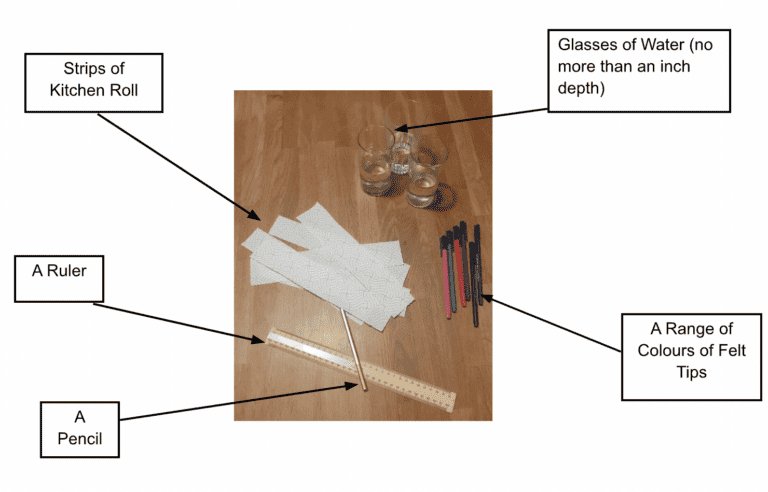
Step 1:
Draw a line on each of the strips of kitchen roll with the pencil. This should be at a height where when you put the strips in the water the line should be above the level of the water by roughly a centimetre. You will need one strip of kitchen roll per colour that you want to use.
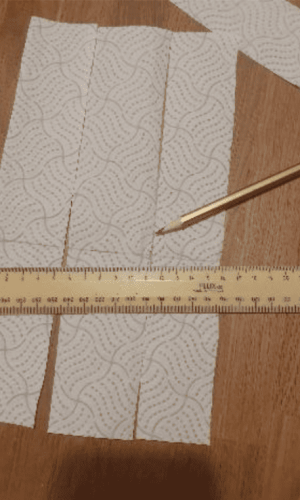

Step 2:
Draw a dot of a colour on the line of each of the strips. You can also write the colour at the top of the strip so that you don’t forget what colour it started as.
Step 3:
Place the strips in the glasses of water so that the bottom of
the strip is submerged but the colour dot lies about a
centimetre above the top of the water.
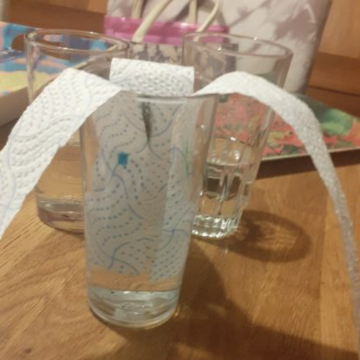

Step 4:
Then, simply wait as the water travels up the kitchen roll,
taking with it the felt tip ink. What can you see happening to the
ink?
Step 5:
Take the kitchen roll strips out of the glasses and see what you have created!
Can you see that some colours are made up of multiple colours (like the black and purple in the pictures) while others (like the blue and pink) are just made up of one? Do any of these colours surprise you? Are they the same colours you would combine with paints to get the colour?
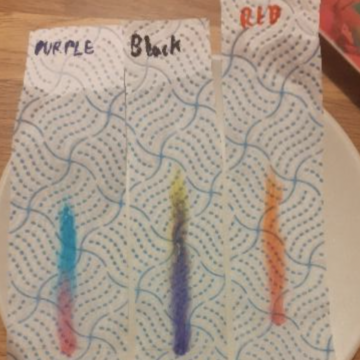
The reason this happens is that some of the dyes will travel more easily up the strips than others, causing the differences to be seen. This is a bit like runners in a race that will all start at the same point but then take a snapshot during the race and each runner will have travelled a different distance.

Step 6:
In order to save your creations, you will need to dry them. Like the runners in a race all the different dyes will eventually reach the end. To keep them spread out you need to remove the water that allows them to
travel up the kitchen roll. The easiest way to do this is to put them on a radiator. Once dry the colours will stay where they are, and you can do what you want with them. Maybe even create some artwork.
You could even send us what you do on our socials! Tag us in your experiments with our handle @captainfantastickids, and use the hastag #captainfantasticscience!
Well, how did you get on? We hope this has helped you engage with Science in a way that doesn’t feel intimidating, and most importantly, had fun!
We’d love to see your creations online, and don’t forget to tag us! We hope you enjoyed exploring science and curiosity for International Day of Women and Girls in Science, and if you want to continue the adventure, we have a BRAND NEW YouTube series called Captain Fantastic Adventures where you can join Dr.Zob and his friends as they continue to discover and have fun!

